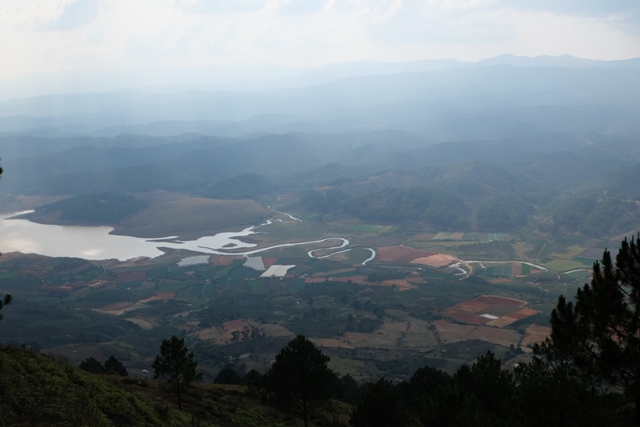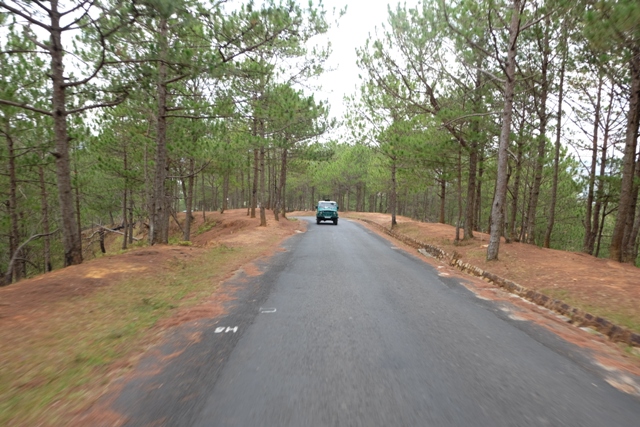During our weekend in this dreamy city, we repeated that phrase more than a few times. The only difference was that we would compare the impression of our new encounter with the name of a different place - while walking under the pine trees, when passing by the palaces that were once the favorite resorts of colonial officials. Or simply the moment when we came across a flower bush that we thought could only bloom in a temperate climate.

Coincidentally, the place where we stayed on our first night in Dalat was a cluster of French villas built in the early 20s of the last century. Nestled discreetly among the pine hills, Dalat Cadasa Resort is a cluster of 12 villas that were abandoned for a long time, then renovated and upgraded by a teacher from Saigon.
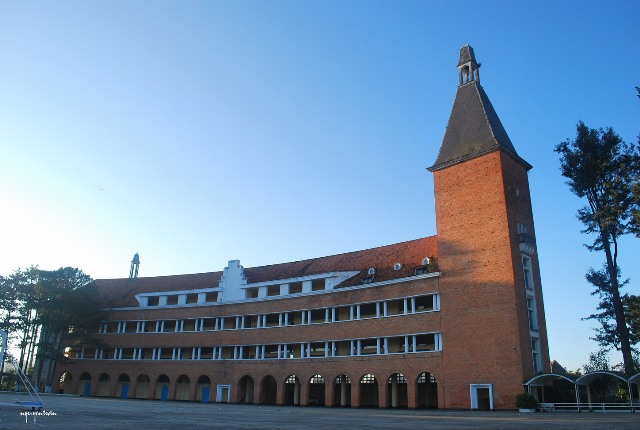
The entire resort is like a museum of French villa architecture, with each building representing a typical beauty of each region: Brittany, Savoie, Provence, Pays-Basque... Moreover, the charm of these villas is also hidden in the fireplace in the middle of the house, the corner for enjoying tea and reading books by the large window and the garden with colorful flowers.
There are all the most beautiful flowers in the villa garden: roses, mimosa, everlastings, hydrangeas, camellias, daffodils, tulips. And the most fragile flower that I love the most - forget-me-nots - the flower that appears almost at any moment we want to see: in the villa garden, in the middle of the cathedral yard, on the balconies of romantic cafes, or on the paths crisscrossing the mountain town.
Sylvie came to Dalat because of a promise to a friend whose father was born and spent his high school years at Lycée Yersin (now Dalat Pedagogical College), one of 1,000 works recognized by the World Association of Architects as a unique construction of the 20th century.
Looking at the red-rimmed classrooms and the towering bell tower, we thought of Toulouse, nicknamed the “pink city” because most of the buildings here were built with unpainted red bricks. Yersin High School and Notre Dame Cathedral in Saigon are two of the buildings built with these exposed bricks.
Stepping towards the opposite classroom building, my heart pounded when I saw the blue painted doors again, the doors still wide open to welcome the Mediterranean breeze on warm sunny days in the south of France.
Yes, a window can also make the hearts of the French people flutter, recalling the beautiful memories of the hexagonal country. And it is also fortunate for the children of the past that the old place they were once attached to is still here, patiently waiting for the day of reunion - even if it is only through a few hastily taken photos.
Designed in 1927 by architect Moncet, this school was once the place where children of French people and wealthy Vietnamese families studied. After being named Petit Lycée Dalat and then Grand Lycée de Dalat, the school was officially renamed Lycée Yersin in 1932 to commemorate Dr. Alexandre Yersin, who discovered on a June day 124 years ago “un grand plateau dénudé mamelonné” (large bare plateau, undulating hills) which we later called Lang Bian plateau.

Doctor Yersin himself probably did not know that this was the moment that opened a new page in history for this land and its residents.
Located on the Lam Vien plateau, at an altitude of 1,500 m above sea level, the honeymoon paradise of newlywed couples far away was once a French resort during World War II, when bullets prevented them from returning to their homeland. The French built many works with Western architectural influences in Da Lat as if to give their fellow countrymen a bit of familiarity in a foreign land.
And like other European cities, in Da Lat there is a Romanesque cathedral with a cross-shaped foundation. Standing on the 14m high bell tower of the church, you will have a panoramic view of the city. The symbol of a rooster standing on the top of the bell tower is associated with the story of Saint Peter recorded in the Gospel, reminding of repentance and awakening. For this reason, the church also has another name, "Rooster Church".
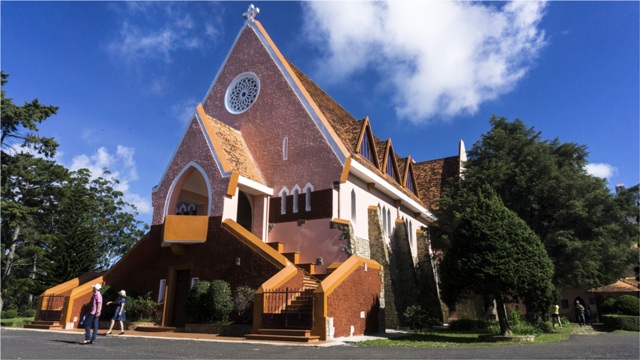
It is not an exaggeration to compare Da Lat to a museum of intercultural architecture, where Vietnamese bamboo and wood materials blend with Western-inspired exposed bricks, reinforced concrete and glass. Domaine Church is a typical example of this trend. Many experts believe that the steep roof of the church is built higher than other traditional churches to represent the Rong house construction style of ethnic minorities.
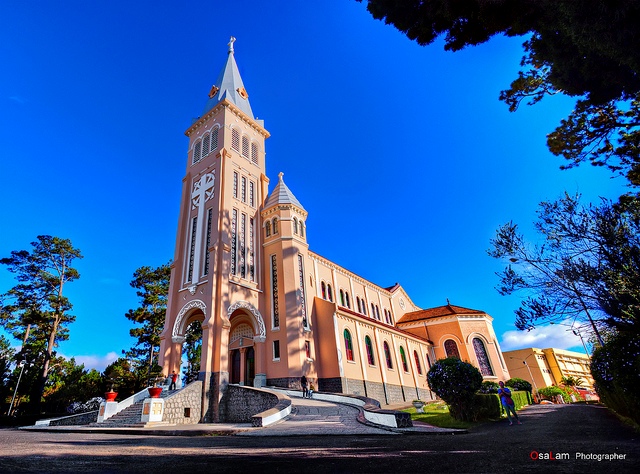
The attraction of Dalat lies in the beauty of the mixture of two cultures that still resonates in stories, displayed in every row of trees and street corner we once encountered in this dreamland.
And for me, if I had to choose the moment when I felt most attached to this land, it would definitely be the time I enjoyed wine in the transparent glass hut in the corner of Cadasa garden with my companions. The drops of Dalat wine at that time sometimes led me to distant associations, about the glasses of wine celebrating the joy of a certain family, about a hundred years ago, also in this space.
Article: Trang Ami Photos: Chau Giang, Dong Thu Ha, Khoi Tran, Viet Tri






